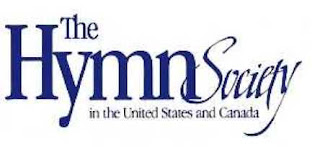 Hymnwriter Christopher Wordsworth (October 30, 1807 - March 20, 1885) was a priest and bishop in the Church of England, well known for the depth of his scholarship, and better known for his other writings than for his numerous hymns. He was a nephew of the Romantic poet William Wordsworth.
Hymnwriter Christopher Wordsworth (October 30, 1807 - March 20, 1885) was a priest and bishop in the Church of England, well known for the depth of his scholarship, and better known for his other writings than for his numerous hymns. He was a nephew of the Romantic poet William Wordsworth.Christopher Wordsworth was for eighteen years the vicar of the parish of Stanford-in-the-Vale-cum-Goosey, while also serving as a Canon and later Archdeacon of Westminster Abbey. In 1869 he was appointed Bishop of Lincoln.
His early works were classical history, but he also published a major history of the church and his own editions of the New and Old Testaments. He was his uncle's literary executor, and wrote a biography of him.
In 1862 he published The Holy Year, a collection of 127 of his hymns appropriate for the various Sundays and feast days of the church year. The hymns are strongly based in the scriptures and in complex theological concepts. Many of them are ten or more verses long. It may be for these reasons that only a few of them are still sung today. We saw one of those a few weeks ago. This one also appears in some hymnals, but I have restored two verses (the third and fourth) that are usually omitted.
O day of rest and gladness,
O day of joy and light,
O balm of care and sadness,
Most beautiful, most bright:
On thee, the high and lowly,
Through ages joined in tune,
Sing holy, holy, holy,
To the great God Triune.
On thee, at the creation,
The light first had its birth;
On thee, for our salvation,
Christ rose from depths of earth;
And then, on thee, victorious,
The Spirit sent from heaven,
And thus on thee, most glorious,
A triple light was given.
Thou art a port, protected
From storms that round us rise;
A garden, intersected
With streams of paradise;
Thou art a cooling fountain
In life’s dry, dreary sand;
From thee, like Pisgah’s mountain,
We view our promised land.
Thou art a holy ladder,
Where angels go and come;
Each Sunday finds us gladder,
Nearer to heaven, our home;
A day of sweet reflection,
Thou art a day of love,
A day of resurrection
From earth to things above.
Today on every nation
The heavenly manna falls;
To holy convocation
The silver trumpet calls,
Where God's great light is glowing
With pure and radiant beams,
And living water flowing
In soul refreshing streams.
New graces ever gaining
From this our day of rest,
We reach the rest remaining
To spirits of the blessed.
And still we bring our praises,
Our promised respite won;
The church its voice upraises
To God, blessed Three in One.
Christopher Wordsworth, 1862; alt.
Tune: SUNDAY (7.6.7.6.D.)
William H. Monk, 1862
The prolific hymn tune composer William H. Monk was the musical editor for The Holy Year and also wrote this tune for this hymn. Apparently it is called WORDSWORTH in some later hymnals, but I have given back its original name.
The composers of most of the tunes in The Holy Year are named, but three are only identified by initials. Two of the tunes are credited to "S.H.W." and I don't think it's just a coincidence that those are the initials of Wordsworth's wife, Susanna Hartley Wordsworth. This suggests that the other two composers identified by initials, "A.F." and "E.F." may also have been women, and I'm going to do some further research to see what can be determined (I already have a suspicion as to the identity of "E.F.").












